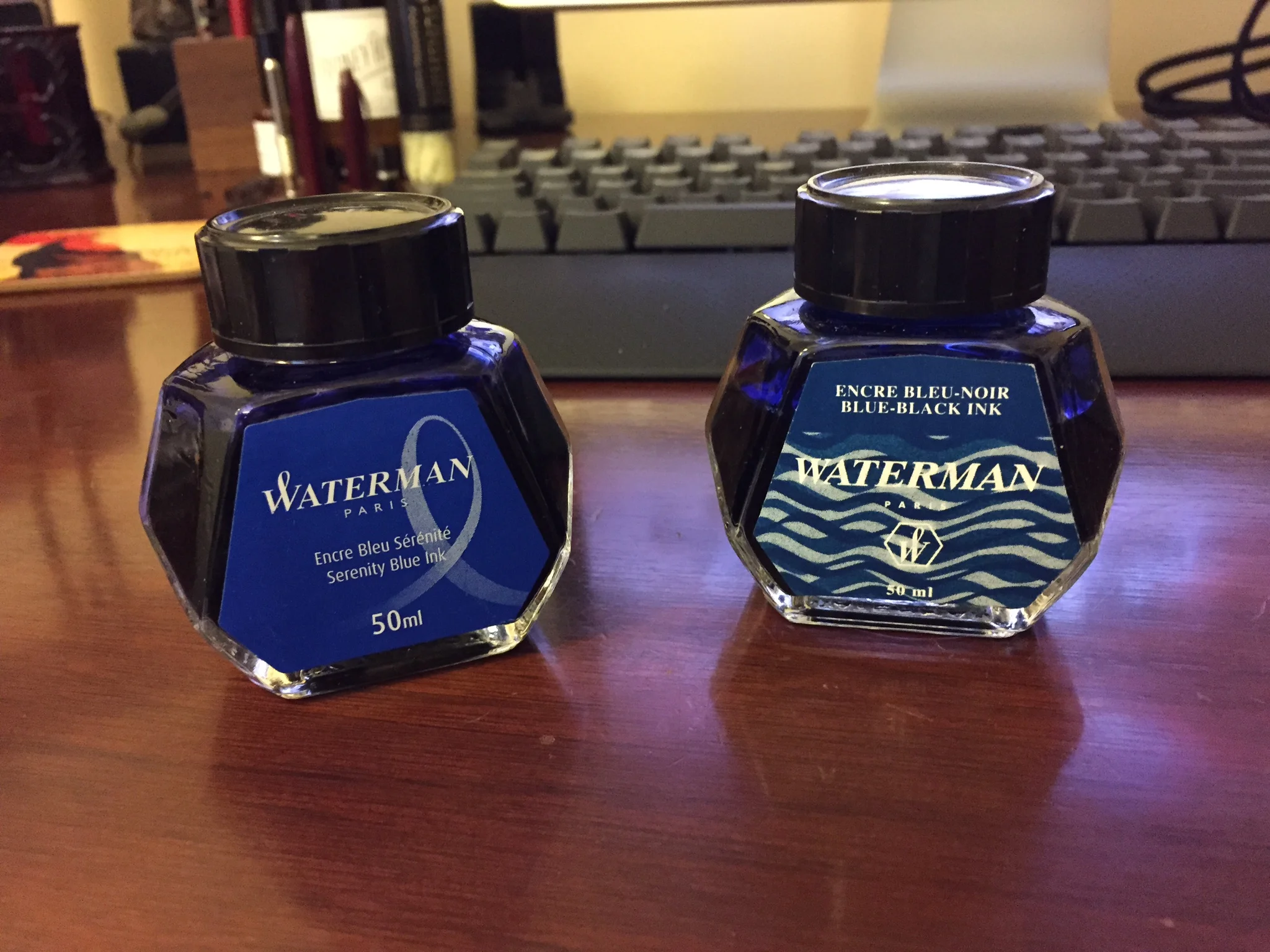While I'm working on the more comprehensive Parker Vacumatic review, I thought I would write a shorter piece to specifically answer some questions I've received about inks that are safe to use in vintage pens. Experienced pen repairers and restorers typically advise vintage pen collectors to use what they deem to be "safe" inks in vintage pens, namely Waterman Ink and Sheaffer Skrip. You also hear Aurora being plugged from time to time. So what's the truth here? First of all, a disclaimer: everything I say on this website comes from my own experience, which is limited compared to many, many others out there, given that I have only been collecting for five or six years. For example, Richard Binder has written an excellent (and comprehensive) article on fountain pen inks, which has not only informed my own views but, at least to me, remains the definitive authority out there on this issue.
But here are some things to consider that I've found invaluable:
- Clean your pens regularly! No matter what ink you may use, you need to practice good pen hygiene and make sure your pens are flushed regularly. This is especially true with vintage pens, which were designed to write with more "watery" inks and can clog easier than their modern counterparts.
- Inks sold by the old-line pen manufacturers (i.e., Waterman, Sheaffer, Aurora) are generally safe to use in all pens. These inks are your best bet, and the rule of thumb that I fall back on when I get nervous about staining a favorite or valuable pen. There are some exceptions of course: people have had problems with modern Parker Quink, particularly the black, and Richard points out that Sailor inks may be too alkaline to use with the kinds of celluloids used in vintage pens. Purple ink can stain anything, no matter the brand. (See below.)
- If you must use highly saturated inks such as Noodler's, Private Reserve, or Levenger in a vintage pen, clean regularly and be prepared to see some staining. For example, I've accepted that the clear ink sac in my user-grade Parker 51 is never going to return to its original color after I filled it with Noodler's La Couleur Royale, but I don't care. It's not a collector's item, and I practice good pen hygiene when using Noodler's Inks in that pen (i.e., flushing the pen after every fill).
- Avoid purple inks in vintage pens. I've found that even Waterman purple has a tendency to stain.
- Don't use certain vintage inks such as Parker 51 Ink or Superchrome. You can still find bottles of these inks in antique stores, and apparently people are tempted to use them. While certain vintage inks such as Carter's Ink and Sheaffer Skrip have held up well over the years and are perfectly usable, 51 Ink and Superchrome are highly corrosive and will destroy pens. If any vintage ink you might find--no matter the brand--has mold or a musty smell, don't use it.
- Finally, if you feel handicapped by the colors available to you in the "safe" ink lines, consider ink mixing! I created the red-black ink below using a mixture of four parts Sheaffer Skrip and one part Aurora Black. I've been very satisfied with the result. Mixing Waterman blue and Waterman purple 50/50 will also create a nice violet-blue color, which stains less than pure purple, in my experience.
My first "creation": "The Gentleman Stationer Red-Black".
